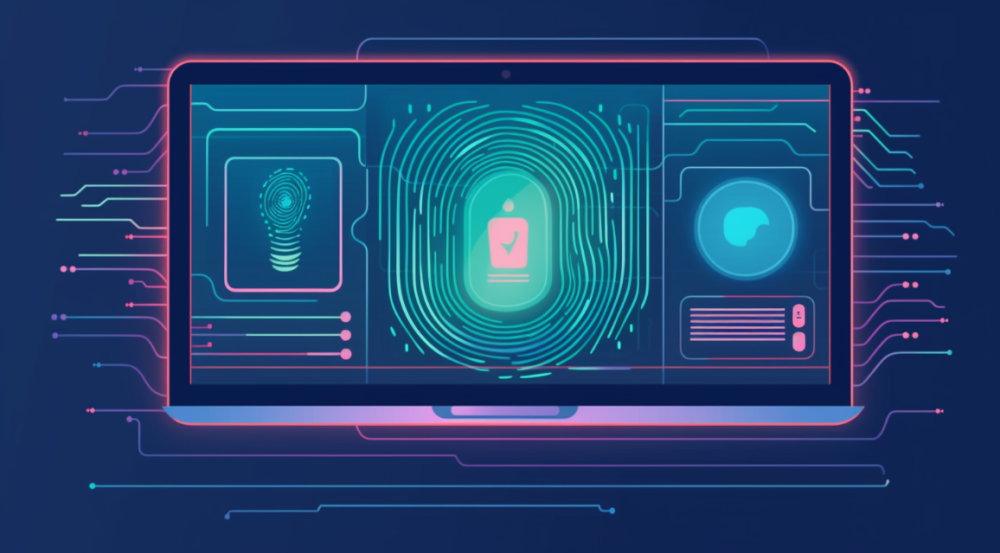10 Browser Fingerprints to Know in 5 Minutes
 BrowserScan
BrowserScan
If you have been paying attention to the adverts that appear on websites, you may have noticed that the adverts contain similar products that you have searched for before. How does the website know which products you want? How does a website show different adverts to different people?
The answer: browser fingerprinting. Websites collect usable data from browsers to identify and differentiate between users. By using browser fingerprinting, websites can track a user's browsing habits and purchasing intentions in order to provide content, adverts and promotions that are of interest to the user.
What is browser fingerprinting?
As we all know, everyone's fingerprints are unique, and we can pinpoint a person by their fingerprints. As it is online, the website is not in direct contact with the user. If a website wants to filter out the target user from a sea of people, it needs to collect some information about the user's device through the browser. This information can be integrated together to identify a user, just like the label or identification code of a commodity, we call this information: browser fingerprint.
What does a browser fingerprint consist of?
A browser fingerprint consists of a number of parameters, and as technology evolves, the number of parameters in a fingerprint will increase. At the same time, websites will also eliminate some fingerprint parameters that have no reference value. Next, we will list some of the most common browser fingerprints.
1.HTTP request header
When a user visits a website using a browser, a request will be sent to the website, and the website will return data according to this request. In the HTTP request header, including the user agent (UserAgent), acceptance language (Accept Language), reference headers (Referer headers). This information tells the website user what browser, device, and browsing history they are currently using.
For example, when you use a computer and a mobile phone to visit the same site, the content and layout will be different; the site will display different languages according to the users of different countries.
2.UserAgent
UserAgent is actually a string of characters that the browser sends to the website. The website can identify the type of browser, browser version, operating system type, version and other information that the user is using through the UserAgent.

3.Screen Resolution
The screen resolution of the device and the resolution of the content that can be displayed in the browser window can also be used as the fingerprint of the browser, we can generally adjust the size of the browser window or use some plug-ins to modify the screen resolution information.

4.Geographic Location, Time Zone, Local Time
If you usually use online maps, I believe you have a deep understanding of this.
With the help of IP database, the website will use the IP address, you can get the user's geographic location, so as to know where you are in the country, the local time zone and the specific time. The website can also get your time zone by using the Browser API. The website will compare the time zones obtained in both the ways and if inconsistencies are found, there is a possibility that the user will be marked as suspicious.

You can use BrowserScan to check the geographic location of an IP address.

You can use BrowserScan to check the time where the IP address is located, time
5.Browser Language Settings
Browser language setting is also one of the browser fingerprints, the website will display different contents according to the language you set. Of course, this information will also be used to track and identify users.

6.System installed fonts
Different operating systems will install different fonts, Windows and Mac systems will have a different list of fonts. When you use the fingerprint browser, especially pay attention to the difference.

7.Hardware device information
CPU concurrency, GPU, memory size and other information.


8.Canvas Fingerprinting
Imagine you are drawing on a white paper. You may choose different colours, brushes, brush shapes and painting techniques to complete your work. This can be used to identify your style of drawing, like your "drawing fingerprint". canvas fingerprinting is similar: an image is created by some special drawing operations, such as drawing lines, filling shapes, etc. This image is based on the user's device and browser. This image is based on the characteristics of the user's device and browser, including hardware, graphics processor, etc., so it can be regarded as a "fingerprint" left by the user.
9.WebGL Fingerprinting
Similar to Canvas fingerprinting, WebGL fingerprinting is the use of WebGL technology to perform some specific operations on the user's device, generating a unique "trace", just like a special painting trace. Such traces are generated based on specific characteristics of the user's device such as hardware, graphics processor, drivers, etc. Each device will be different. Each person's device will be different, and so will the WebGL fingerprint.
10.Audio and Video Fingerprints
Generates a unique "identifier" based on the audio and video performance of the user's device.
There are other fingerprinting techniques too numerous to list here. In short, the more information a website collects, the easier it is to identify and differentiate between users.
[**
Will browser fingerprints be the same?**](https://blog.browserscan.net/docs/10-browser-fingerprints#Will_browser_fingerprints_be_the_same?)
Due to the differences between devices and networks, it's harder than ever to find the exact same fingerprint as your browser. Some reports show that out of almost 290,000 browser fingerprints, it's possible to have two identical fingerprints.
What does a restricted account have to do with browser fingerprints?
If you have multiple shops on the same platform (such as amazon or ebay) or manage multiple Google Ads accounts. When you sign in to these accounts on the same device, it is possible that the platform will detect it and feel that there will be a connection between them. Depending on the user agreement and the rules of the website, the website operator may restrict or block these accounts. Most websites do not allow the same person to have multiple accounts, which is in the interest of the website and other users.
Is there a way to stop websites from getting browser fingerprints?
In fact, the very act of blocking a website from capturing your browser fingerprints indicates that you are "hiding" your true identity, which is very suspicious to the website and will eventually lead to your account being blocked.
Therefore, the idea of preventing websites from capturing your browser fingerprint is not feasible.
I've learnt about browser fingerprinting, how can I prevent my account from being blocked?
Use tools to create browsers with different browser fingerprints, allow websites to detect browser fingerprints, and allow different accounts to log in and operate in different browser environments.
If you only have a handful of accounts, then it is the most cost-effective way for you to log in to a few accounts on a single computer, or use multiple computers to manage those accounts. However, if you have 100, or even 1,000 or more accounts, using multiple computers to manage your accounts is not practical, nor can you afford the huge costs.
Therefore, the easiest, most reliable and secure way to manage a large number of accounts is to use Anti-detect Browser. With Anti-detect Browser, you can create browser profiles with different real device fingerprints on just one computer. Each browser profile is isolated from each other and does not interfere with each other. You can also configure different proxy IPs for each browser profile, truly isolating the browser profiles from each other and the IPs. It appears to the website that the accounts are running on different devices, and this approach greatly improves the security of your accounts.
BrowserScan has been working on browser fingerprinting technology. In the future, we will also provide you with detailed information on various fingerprinting techniques to improve your knowledge of browser fingerprinting. If you are interested, you may want to add this blog to your favourites.
Finally, don't forget to use BrowserScan to scan your browser fingerprints!
Read Also
Browser Fingerprinting Guide for Beginners
Subscribe to my newsletter
Read articles from BrowserScan directly inside your inbox. Subscribe to the newsletter, and don't miss out.
Written by

BrowserScan
BrowserScan
Am I 100% anonymous? Check your browser fingerprints and IP address to find how your online identity looks👉www.browserscan.net